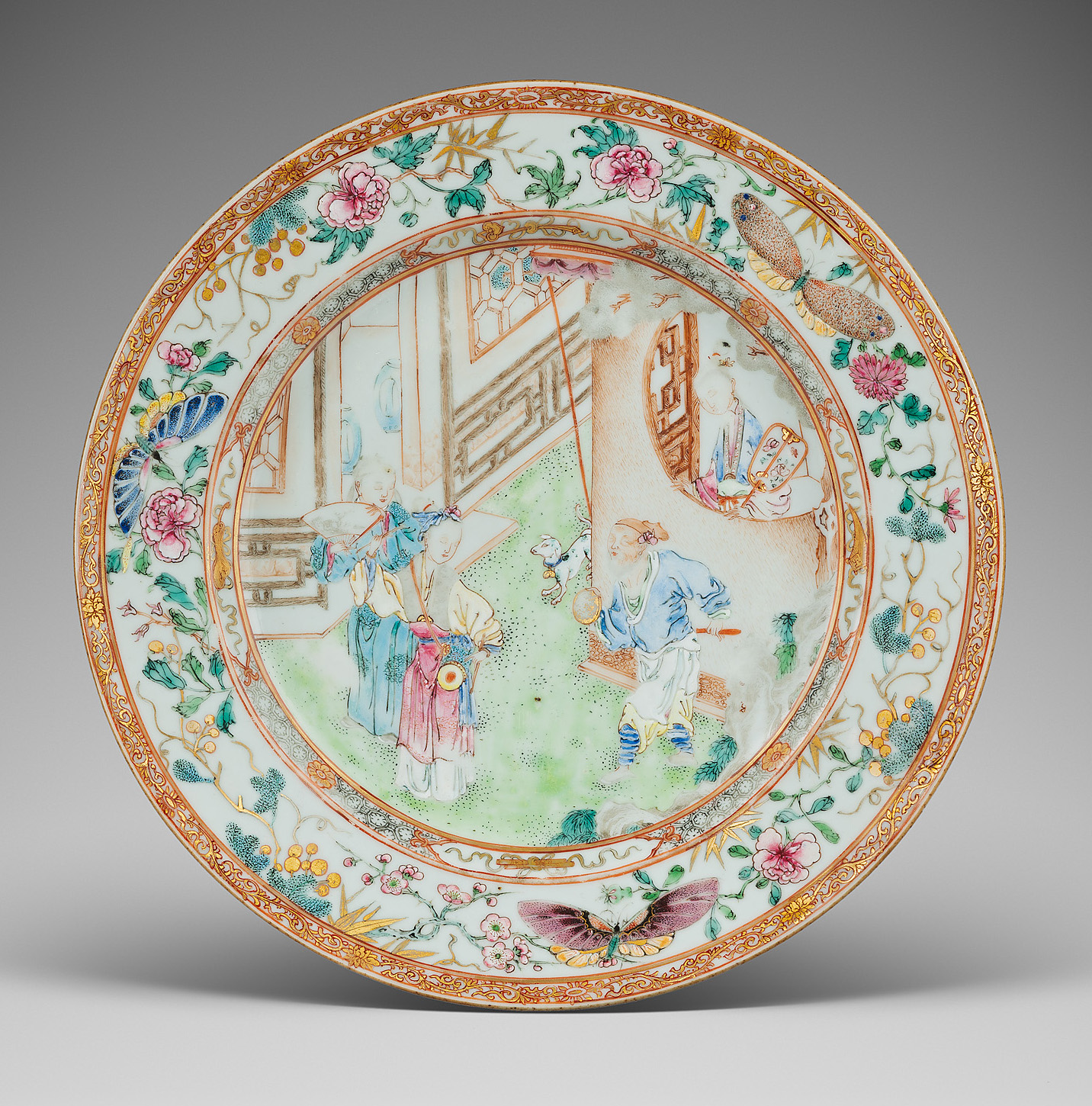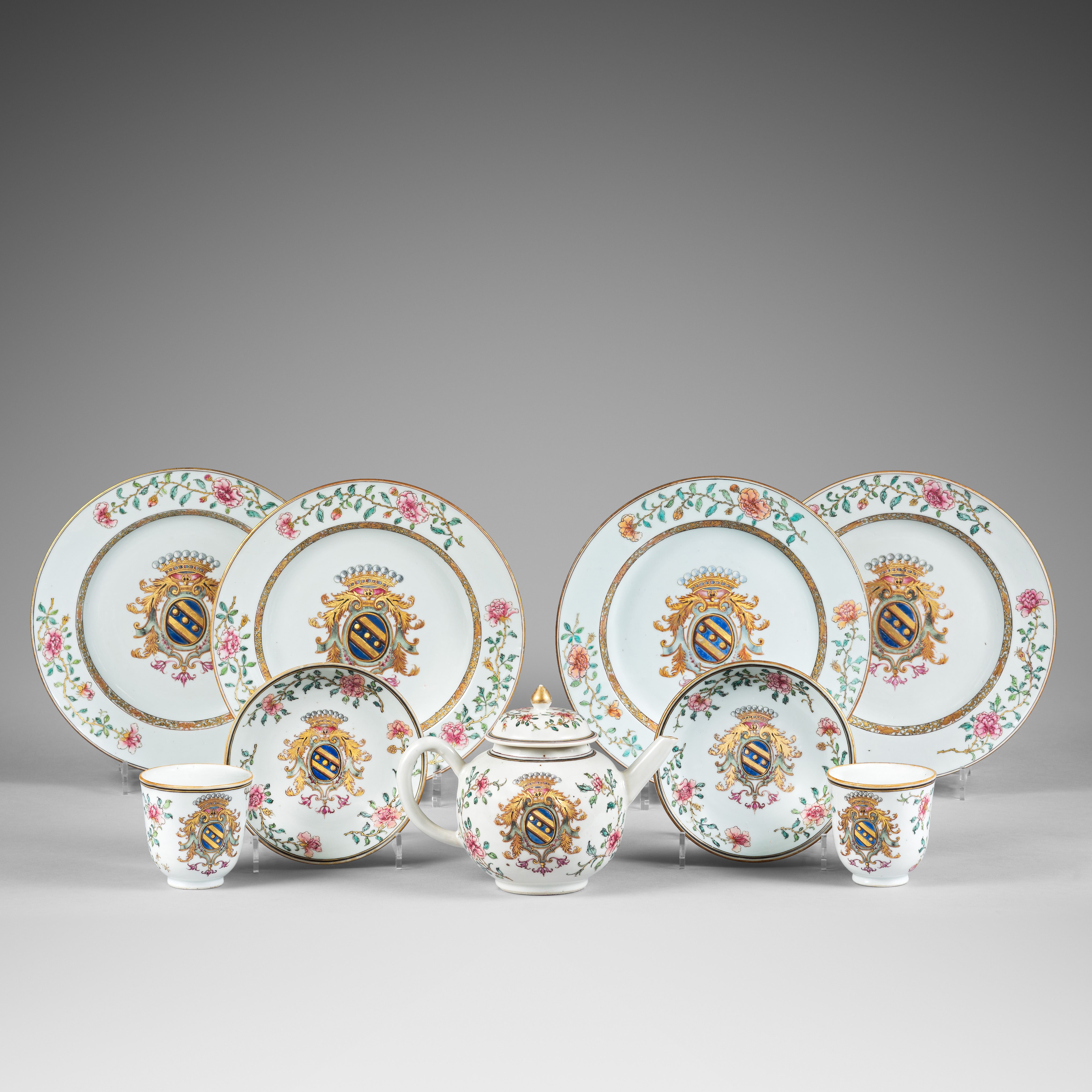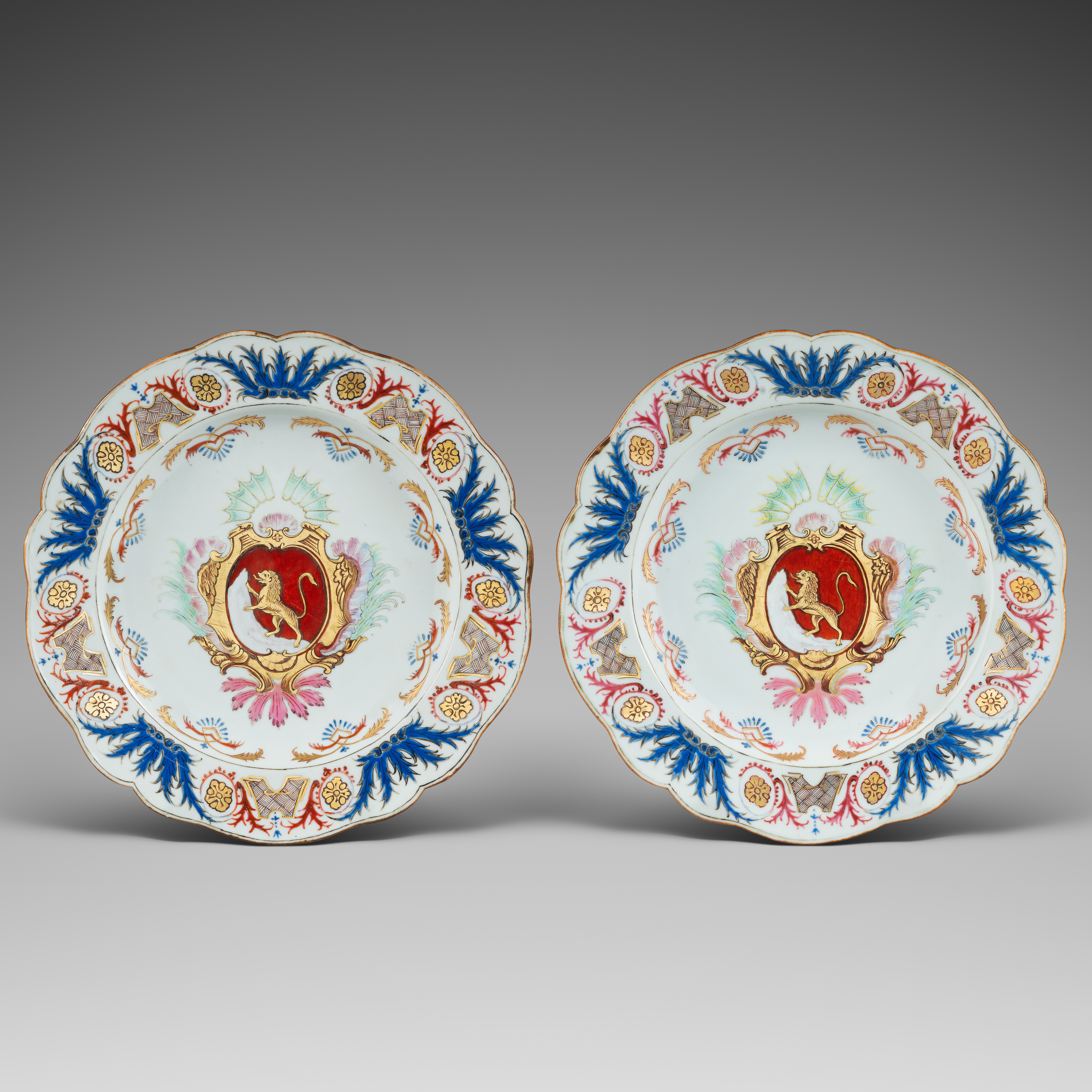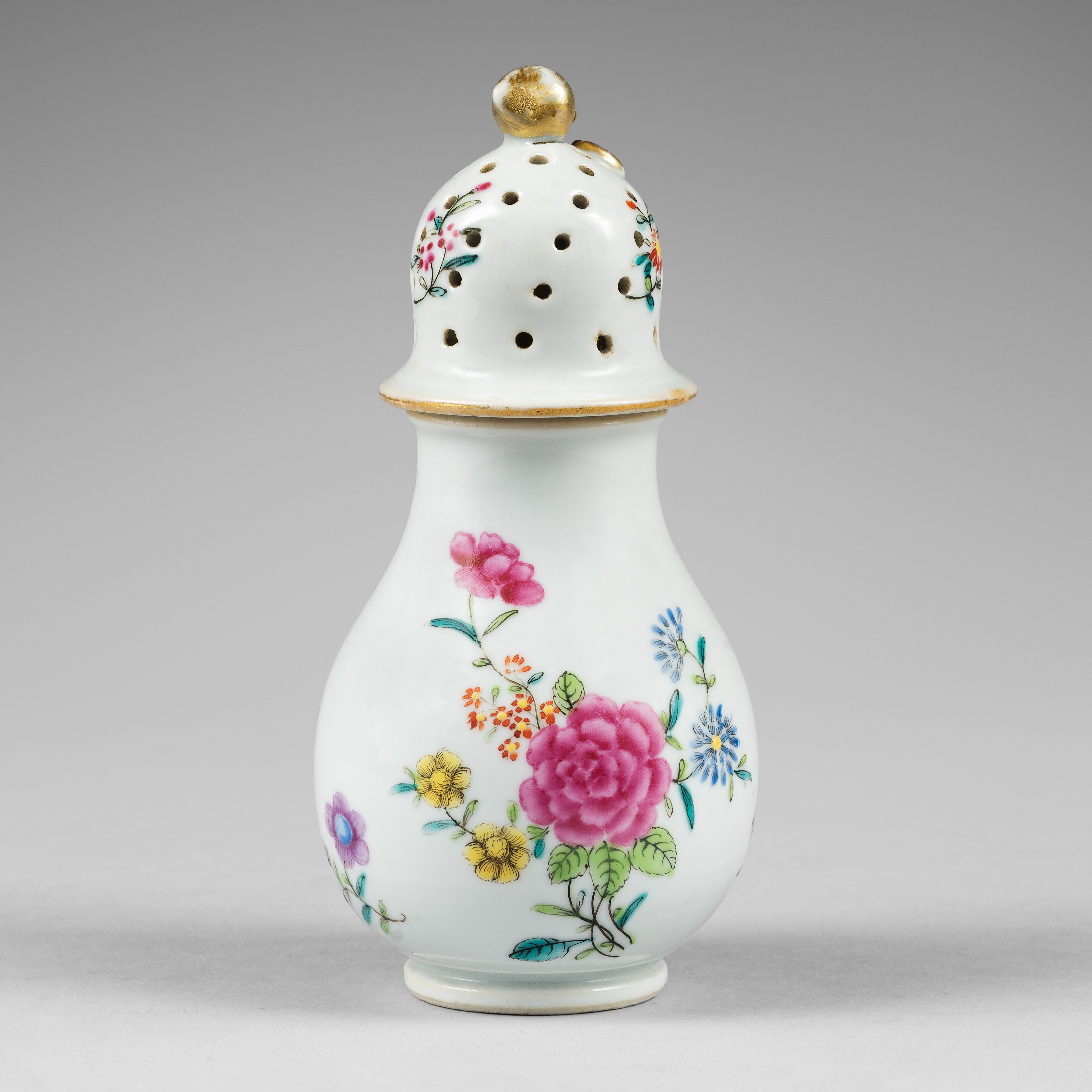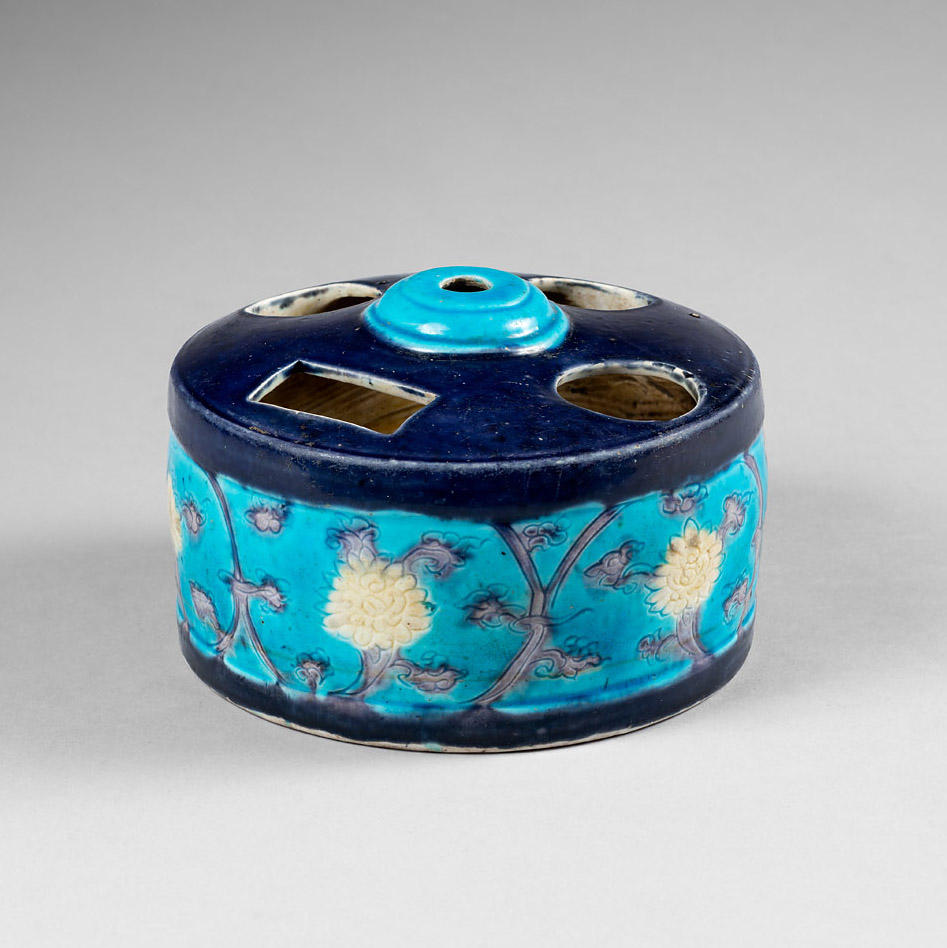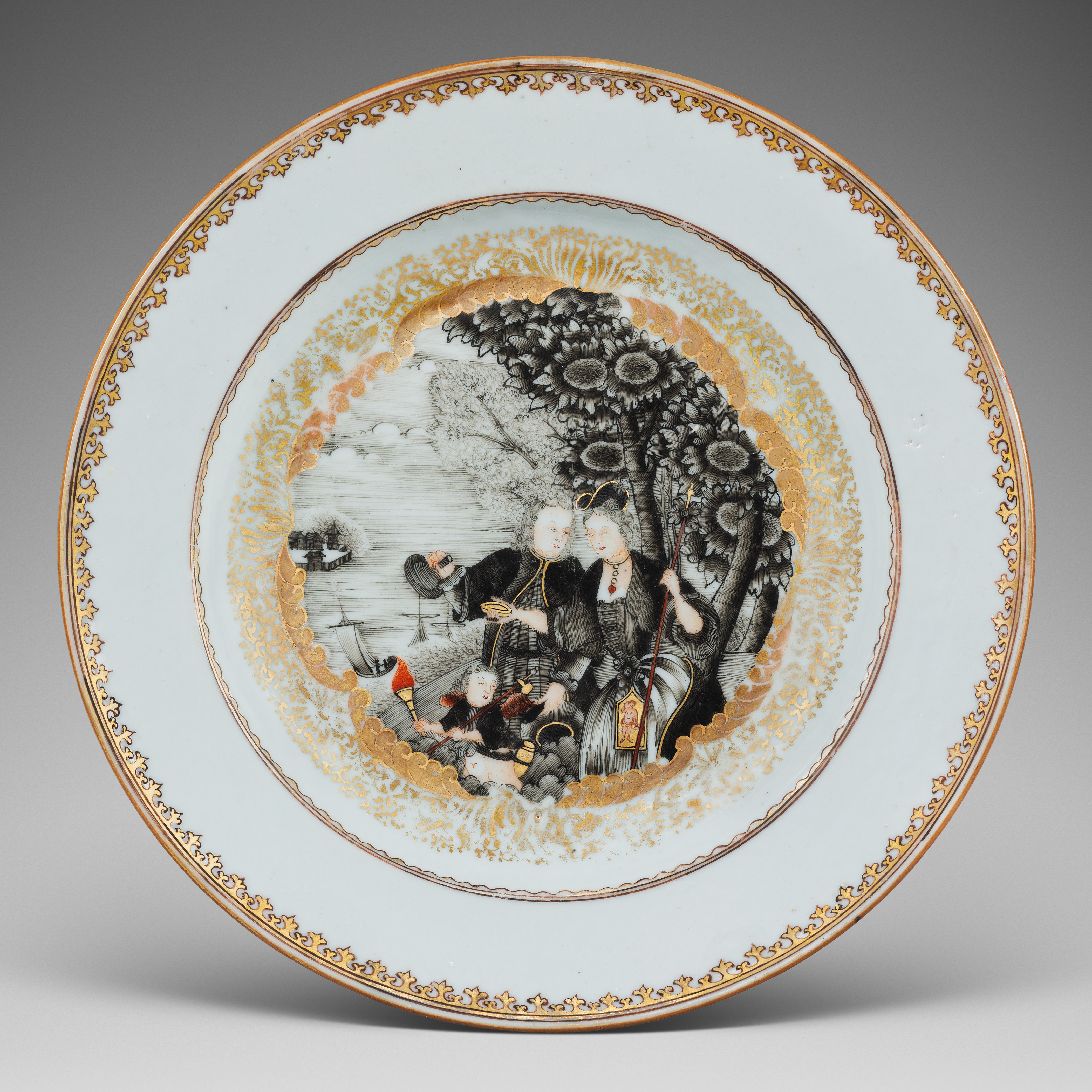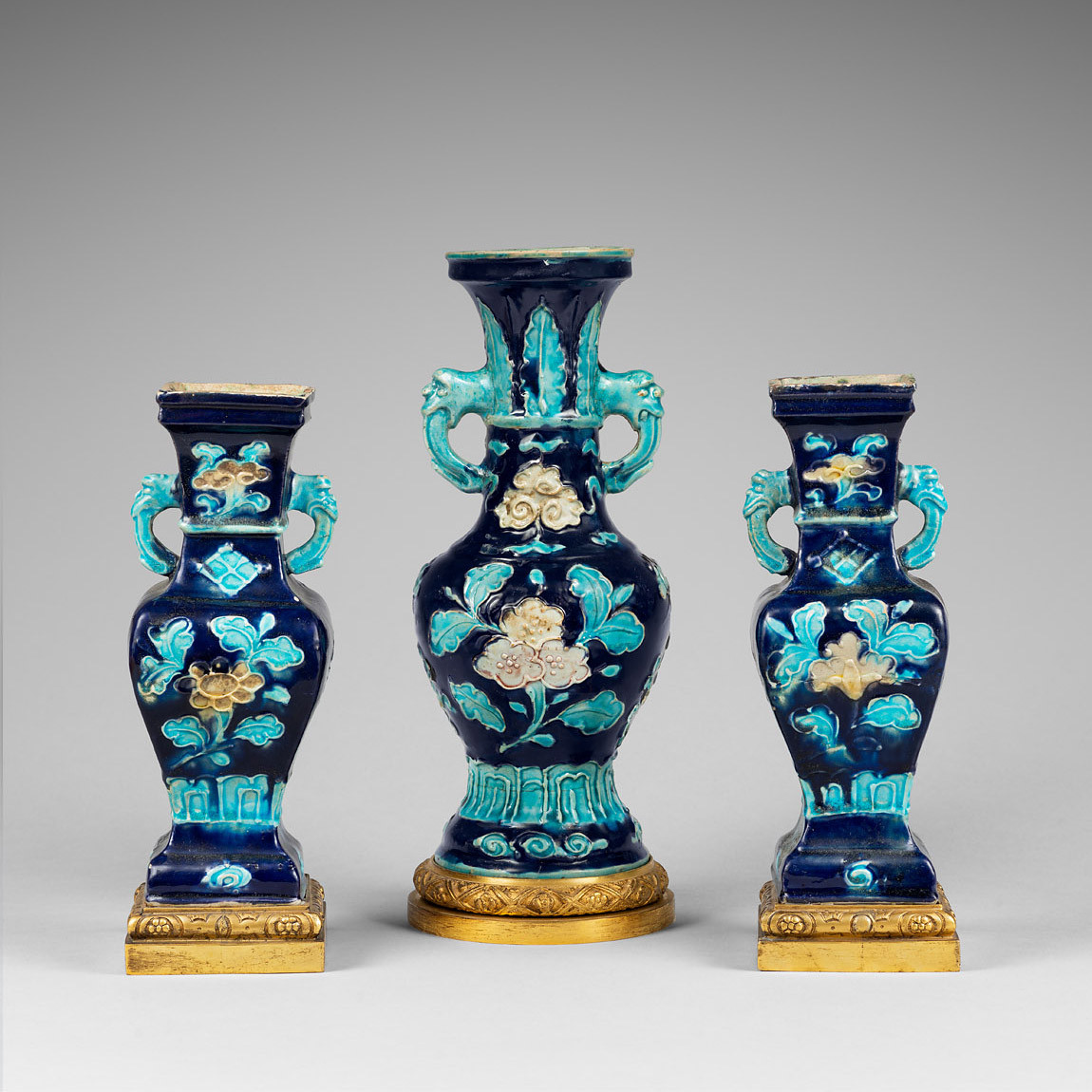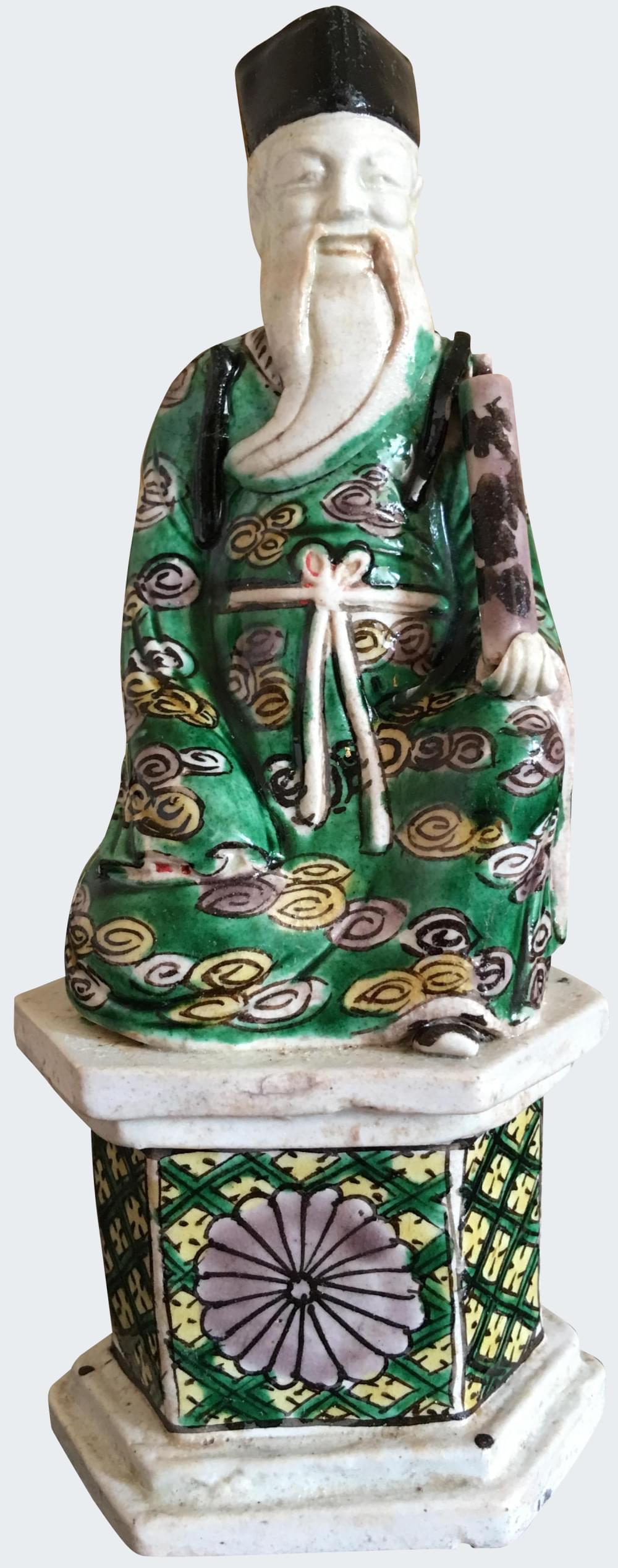
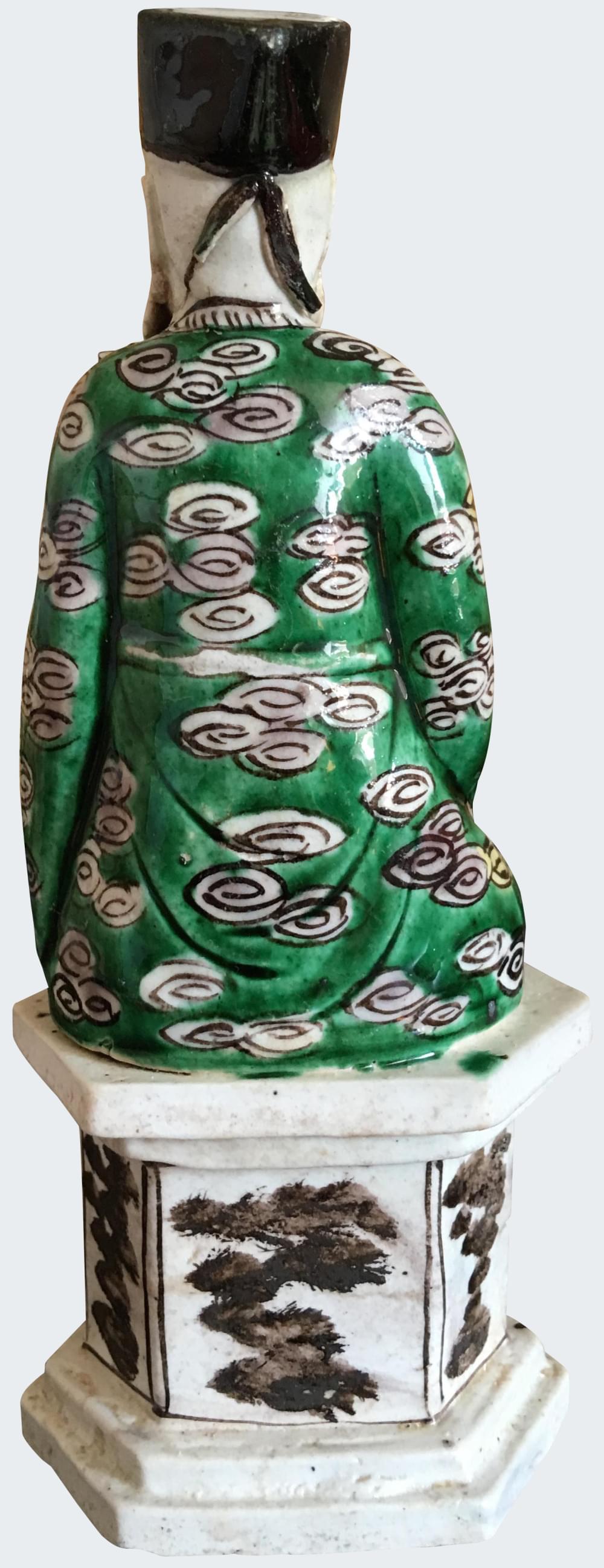
A Chinese biscuit figure of the immortal Cao Guo-Jiu or a scholar. Kangxi Period.
Figure of an immortal seated on a hexagonal base, decorated in famille verte enamels on the biscuit, the face, beard and left hand covered with transparent lead glaze. Three sides of the base have geometrical patterns and rosettes in enamels ; the three sides at the back are undecorated except for a stylized flower or a lozenge in black beneath transparent glaze.
- Country:
- China
- Period :
- Kangxi (1662-1722), early 18th century
- Material:
- Porcelain
- Dimension:
- 15,5 cm
- Reference :
- B252
- Status:
- sold
Provenance
Château du M., property of the descendants of the Maréchal d’Empire C.-D. de P.
Related works
An identical figure, formerly in the collection of R. May, is held on at the Rijkmuseum in Amsterdam (inv. No. AK-RBK 15872) and is illustrated by Christiaan J.A. Jörg in Famille Verte Chinese Porcelain in Green Enamels (p. 122, cat. 110). This figure is also illustrated by Jörg & Van Campen in Chinese Ceramics in the Collection of the Rijkmuseum, Amsterdam. The Ming and Qing Dynasties (cat. 215).
One very similar figure, from the Sowell Collection, is illustrated by Michael Cohen and William Motley in Mandarin and Menagerie, Chinese and Japanese Export Ceramic Figures (p. 55, 1.4). The authors suggest that this figure is a scholar.
For several figures, part from a pair, see Sotheby’s London, 17 june 1998, lot 374 ; Christie’s Amsterdam, 5 december 2000, lot 161.
Severals models of immortals, from the Dresden Collection, are published by W. Bondy in Kang-hsi, Eine Blüte-Epoche der chinesischen Porzellankunst (Munich, 1923, pp. 169-171)
Other models, from the Chinese Pavilion at Drottningholm, are published by A. Setterwall, S. Fogelmarck & B. Gyllensvärd in The Chinese Pavilion at Drottningholm (Malmö, 1974, pp. 167, 290).
Notice
The eight immortals appeared as a discrete group in the Jin dynasty (1115-1234) and became increasingly popular from the Ming dynasty to the Qing. Sets of the « Eight Daoist Immortals » were popular for the Chinese market as well as for export to the west, where such small figures adorned the interior as exotic representatives of faraway « Cathay ». His official cap identifies probably this figure as the Immortal Cao Guo-jiu, a Song-dynasty military commander who usually holds a court tablet or castanets and is the patron of actors and performers. The scroll could also suggest that this figure could be a scholar, part of a much larger group, all with a different attributes, perhaps symbols of scholarship or the calendar months.



